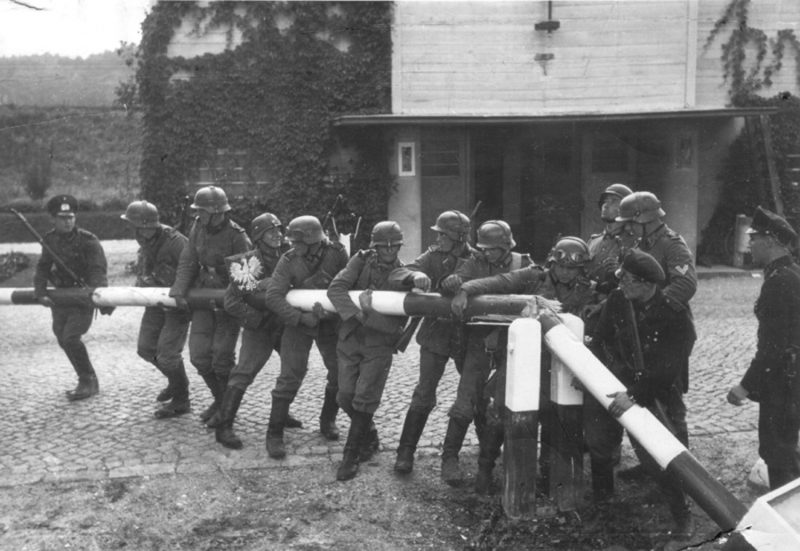
Prologue
WWII was inevitable; despite all the diplomacy and attempts at appeasement, it was a war that Hitler really wanted. A week before the Fall Weiss started (22nd August 1939), he said:“The object of the war is … physically to destroy the enemy. That is why I have prepared, for the moment only in the East, my ‘Death’s Head’ formations with orders to kill without pity or mercy all men, women, and children of Polish descent or language. Only in this way can we obtain the living space we need.”The next day, a secret agreement between III Reich and USSR was signed. The Molotov-Ribbentrop Pact (23rd August 1939) delineated the spheres of interest between the two powers, confirmed by the supplementary protocol of the German-Soviet Frontier Treaty amended after the joint invasion of Poland. It remained in force until Operation Barbarossa began.
![Soviet Foreign Minister Vyacheslav Molotov signs the German-Soviet non-aggression pact in Moscow, August 23, 1939 [Public Domain | Wikipedia]](https://www.warhistoryonline.com/wp-content/uploads/2016/08/732px-MolotovRibbentropStalin-521x640.jpg)
Hitler called the invasion as “Defensive War.” This provocation was the best-known of several actions in Operation Himmler, a series of unconventional operations undertaken by the SS in order to serve specific propaganda goals of Nazi Germany at the outbreak of the war.
“Germans in Poland are persecuted with a bloody terror and are driven from their homes. The series of border violations, which are unbearable to a great power, prove that the Poles no longer are willing to respect the German frontier.” – Adolf HitlerAt that time, Europe still believed that the peace could be maintained through diplomacy. The Europeans couldn’t be more wrong. After the summit, the British prime minister Chamberlain returned to Great Britain where he declared that the Munich agreement meant “peace for our time.”
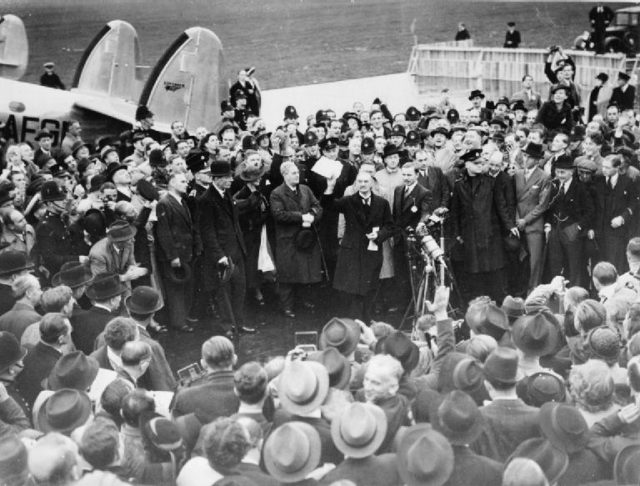
On
31 August 1939, Hitler ordered hostilities against Poland. Because of
the earlier stoppage, Poland managed to mobilize only 70% of its planned
forces, and many units were still forming or moving to their designated
frontline positions. At that time, Poland had no idea that they were
doomed. 17 days later USSR also joined to the war. The Allies didn’t
help.
The Beginning
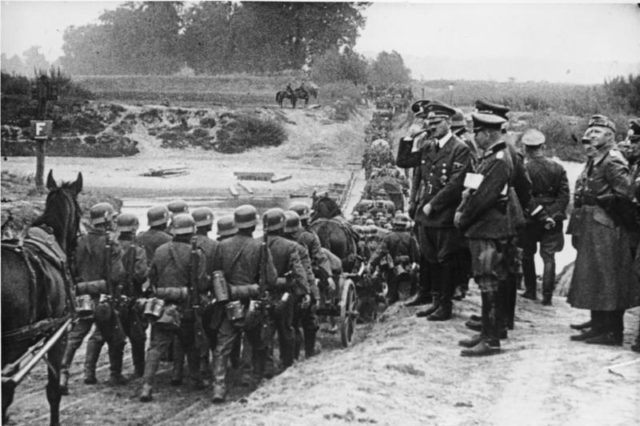
![Forces as of 31 August and German plan of attack [Public Domain | Wikipedia]](https://www.warhistoryonline.com/wp-content/uploads/2016/08/Poland1939_GermanPlanMap-640x487.jpg)
![German battleship Schleswig-Holstein bombarding Westerplatte, Danzig, 1 September 1939 [Public Domain]](https://www.warhistoryonline.com/wp-content/uploads/2016/08/5691eb31d203c-640x443.jpg)
![People of Warsaw in happy demonstration under British Embassy in Warsaw just after British declaration of state of war with Nazi Germany [Public Domain | Wikipedia]](https://www.warhistoryonline.com/wp-content/uploads/2016/08/People_of_Warsaw_under_GB_Embassy_3.09.1939-640x584.jpg)
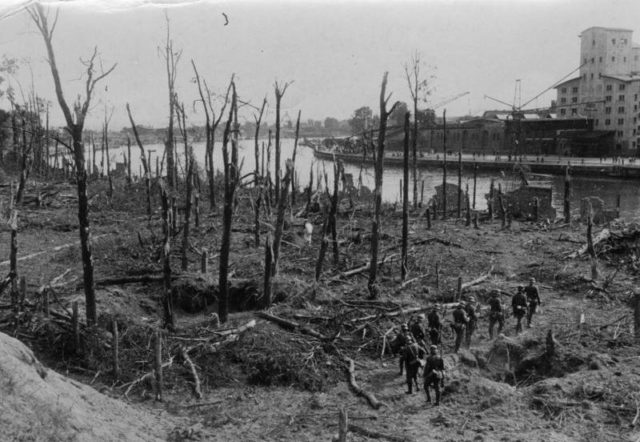
![Polish infantry marching [Public Domain | Wikipedia]](https://www.warhistoryonline.com/wp-content/uploads/2016/08/battle_poland6-1-485x640.jpg)
![Polish 7TP light tanks in formation during the first days of the 1939 September Campaign [P[Public Domain | Wikipedia]<figcaption class=](https://www.warhistoryonline.com/wp-content/uploads/2016/08/7TP-2-542x640.jpg) Polish 7TP light tanks in formation during the first days of the 1939 September Campaign – Public Domain / Wikipedia
Polish 7TP light tanks in formation during the first days of the 1939 September Campaign – Public Domain / Wikipedia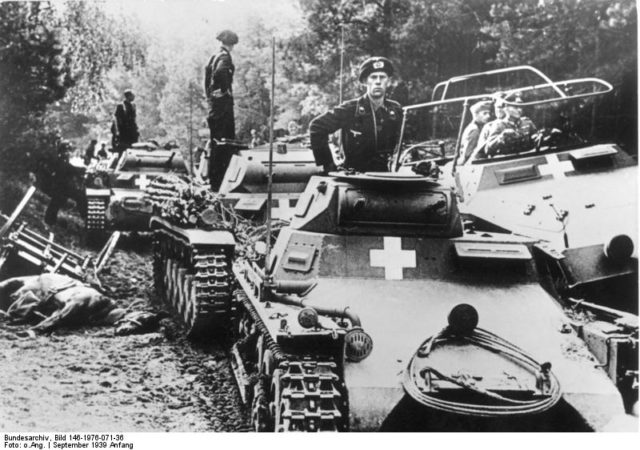
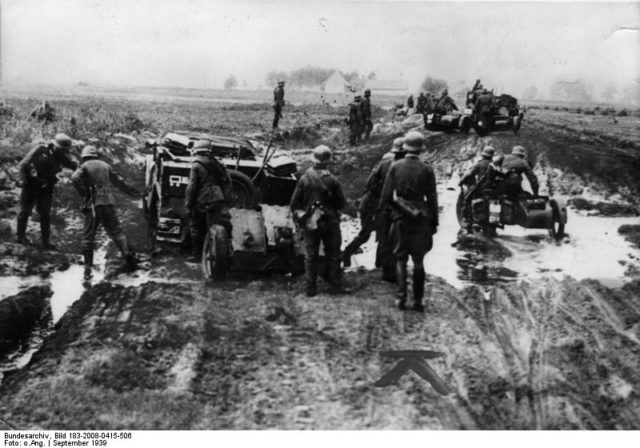
![Polish cavalry in full gallop, Battle of Bzura [Public Domain | Wikipedia]<figcaption class=](https://www.warhistoryonline.com/wp-content/uploads/2016/08/1200px-Polish_cavalry_in_Sochaczew1939a-640x278.jpg) Polish cavalry in full gallop, Battle of Bzura, the biggest battle of Fall Weiss – Public Domain / Wikipedia
Polish cavalry in full gallop, Battle of Bzura, the biggest battle of Fall Weiss – Public Domain / Wikipedia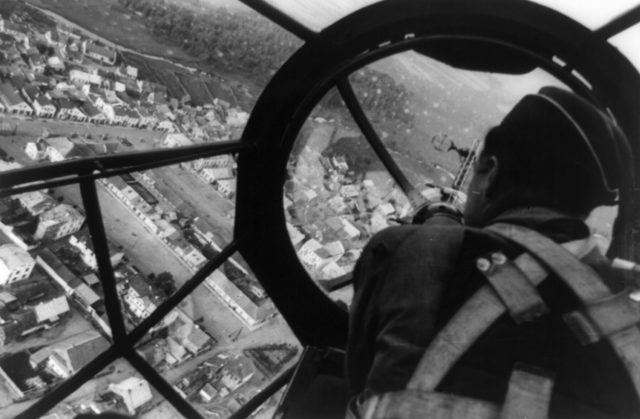
![German aerial bombs straddling a road in Poland. September 1939 [U[United States Library of Congress | Public Domain]<figcaption class=](https://www.warhistoryonline.com/wp-content/uploads/2016/08/battle_poland67-640x452.jpg) German aerial bombs straddling a road in Poland. September 1939 – United States Library of Congress / Public Domain
German aerial bombs straddling a road in Poland. September 1939 – United States Library of Congress / Public Domain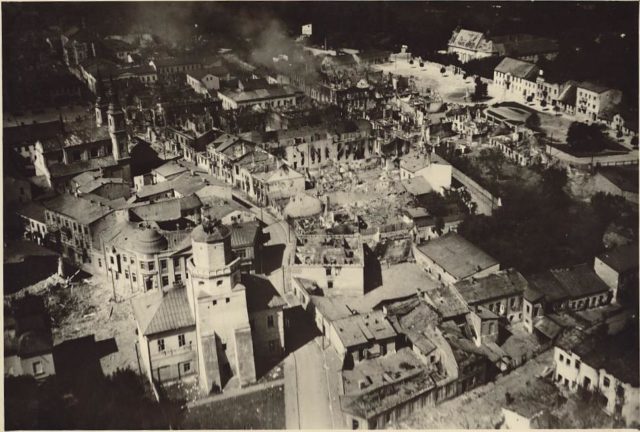
![A bombed Polish Army column during the Battle of the Bzura [P[Public Domain | Wikipedia]<figcaption class=](https://www.warhistoryonline.com/wp-content/uploads/2016/08/Polish_artillery_Battle_of_Bzura_1939.jpg) A bombed Polish Army column during the Battle of the Bzura – Public Domain / Wikipedia
A bombed Polish Army column during the Battle of the Bzura – Public Domain / Wikipedia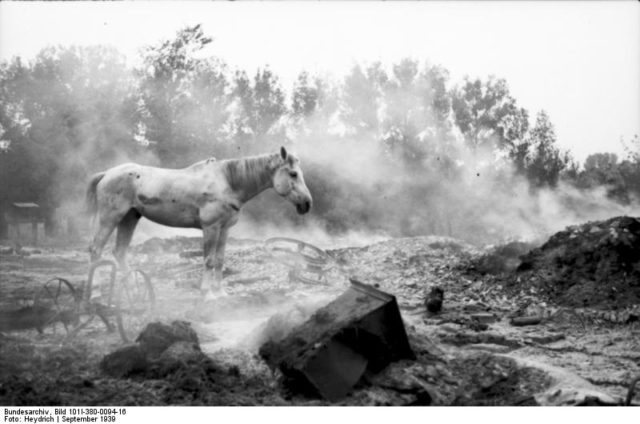
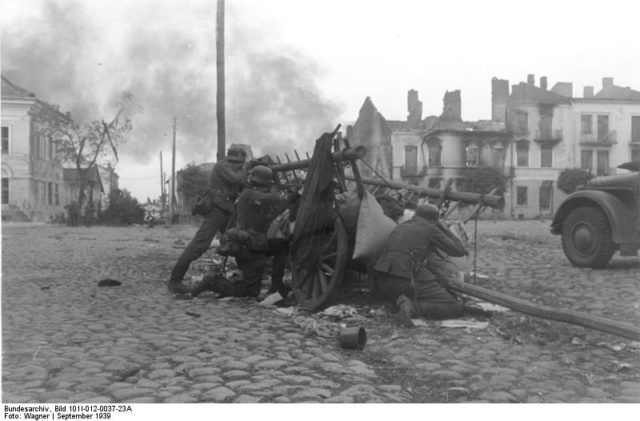
![German troops of SS-Leibstandarte Adolf Hitler Division resting during a campaign toward Pabianice, Poland. September 1939 [United States Library of Congress | Public Domain]<figcaption class=](https://www.warhistoryonline.com/wp-content/uploads/2016/08/battle_poland68-640x442.jpg) German
troops of SS-Leibstandarte Adolf Hitler Division resting during a
campaign toward Pabianice, Poland. September 1939 – United States
Library of Congress / Public Domain
German
troops of SS-Leibstandarte Adolf Hitler Division resting during a
campaign toward Pabianice, Poland. September 1939 – United States
Library of Congress / Public Domain![Polish soldiers with anti-aircraft artillery near the Warsaw Central Station during the first days of September, 1939 [P[Public Domain | Wikipedia]<figcaption class=](https://www.warhistoryonline.com/wp-content/uploads/2016/08/Defenders_of_Warsaw_1939-640x469.jpg) Polish
soldiers with anti-aircraft artillery near the Warsaw Central Station
during the first days of September, 1939 – Public Domain / Wikipedia
Polish
soldiers with anti-aircraft artillery near the Warsaw Central Station
during the first days of September, 1939 – Public Domain / Wikipedia![A damaged Polish armored train captured by German Leibstandarte SS Adolf Hitler regiment, near Blonie, Poland. September 1939 [U[United States Library of Congress | Public Domain]<figcaption class=](https://www.warhistoryonline.com/wp-content/uploads/2016/08/battle_poland70-640x421.jpg) A
damaged Polish armored train captured by German Leibstandarte SS Adolf
Hitler Regiment, near Blonie, Poland. September 1939 – United States
Library of Congress / Public Domain
A
damaged Polish armored train captured by German Leibstandarte SS Adolf
Hitler Regiment, near Blonie, Poland. September 1939 – United States
Library of Congress / Public Domain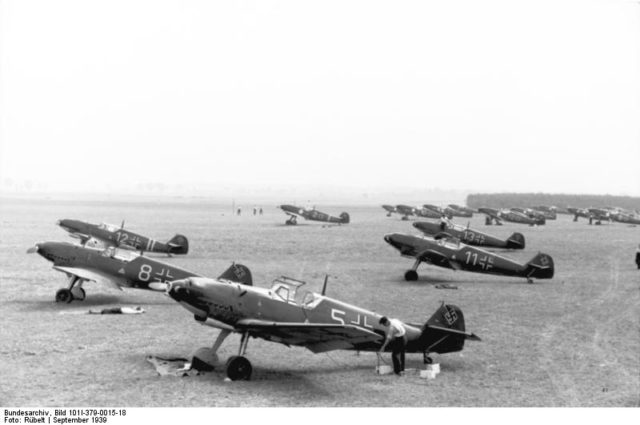
![A girl holding her dog in a devastated neighborhood in Warsaw, Poland. 5 September 1939 [U[United States Holocaust Memorial Museum | Public Domain]<figcaption class=](https://www.warhistoryonline.com/wp-content/uploads/2016/08/battle_poland58-440x640.jpg) A
girl holding her dog in a devastated neighborhood in Warsaw, Poland. 5
September 1939 – United States Holocaust Memorial Museum / Public Domain
A
girl holding her dog in a devastated neighborhood in Warsaw, Poland. 5
September 1939 – United States Holocaust Memorial Museum / Public Domain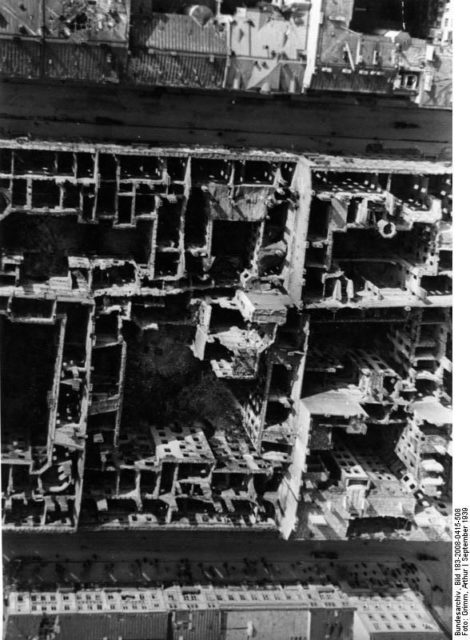
![Pile of Polish rifles collected by German troops, Warsaw, Poland. September 1939 [P[Public Domain]<figcaption class=](https://www.warhistoryonline.com/wp-content/uploads/2016/08/battle_poland18.jpg) Pile of Polish rifles collected by German troops, Warsaw, Poland. September 1939 – Public Domain
Pile of Polish rifles collected by German troops, Warsaw, Poland. September 1939 – Public Domain![Map of the September Campaign. Note the changees since 17th of September [B[By GrzegorzusLudi - Praca własna, na podstawie dat zajęcia różnych miast oraz informacji o bitwach. Own work, based on dates of occupation of various cities and informations about battles., CC BY 3.0, https://commons.wikimedia.org/w/index.php?curid=25881636]<figcaption class=](https://www.warhistoryonline.com/wp-content/uploads/2016/08/Kamp-wrzes22-anim.gif) Map
of the September Campaign. Note the changes since 17th of September –
By GrzegorzusLudi – Own work, based on dates of occupation of various
cities and information about battles., CC BY 3.0 / Wikipedia
Map
of the September Campaign. Note the changes since 17th of September –
By GrzegorzusLudi – Own work, based on dates of occupation of various
cities and information about battles., CC BY 3.0 / Wikipedia![Himmler (behind flag) with Hitler (front left, back turned, holding flag) and Konrad Henlein (on the right) (Gauleiter Sudetenland) in Poland in September 1939 [B[By Picture from Josef Gierse, my dead uncle, I am the heir of the picture - Praca własna, CC BY 3.0, https://commons.wikimedia.org/w/index.php?curid=8340193]<figcaption class=](https://www.warhistoryonline.com/wp-content/uploads/2016/08/Himmler_with_Hitler_Poland_september_1939-640x443.jpg) Himmler
(behind flag) with Hitler (front left, back turned, holding flag) and
Konrad Henlein (on the right) (Gauleiter Sudetenland) in Poland in
September 1939 – By Picture from Josef Gierse, my dead uncle, I am the
heir of the picture – Own work, CC BY 3.0 / Wikipedia
Himmler
(behind flag) with Hitler (front left, back turned, holding flag) and
Konrad Henlein (on the right) (Gauleiter Sudetenland) in Poland in
September 1939 – By Picture from Josef Gierse, my dead uncle, I am the
heir of the picture – Own work, CC BY 3.0 / Wikipedia![Polish prisoners of war [P[Public Domain | Wikipedia]<figcaption class=](https://www.warhistoryonline.com/wp-content/uploads/2016/08/1200px-Polish_prisoners_of_war_1939-640x459.jpg) Polish
prisoners of war. Many of them were sent to labor camps, death camps in
Germany or simply executed by Soviets – Public Domain / Wikipedia
Polish
prisoners of war. Many of them were sent to labor camps, death camps in
Germany or simply executed by Soviets – Public Domain / Wikipedia![Red Army enters the provincial capital of Wilno during the Soviet invasion. 19 September 1939 [P[Public Domain | © IWM (HU 87199)]<figcaption class=](https://www.warhistoryonline.com/wp-content/uploads/2016/08/Soviets_entering_Wilno-640x381.jpg) Red
Army enters the provincial capital of Wilno during the Soviet invasion.
Backstabbed by USSR, Poland lost their last hopes. 19 September 1939 –
Public Domain / © IWM (HU 87199)
Red
Army enters the provincial capital of Wilno during the Soviet invasion.
Backstabbed by USSR, Poland lost their last hopes. 19 September 1939 –
Public Domain / © IWM (HU 87199)![Polish troops withdrawn to Hungary in September 1939 [P[Public Domain | Wikipedia]<figcaption class=](https://www.warhistoryonline.com/wp-content/uploads/2016/08/1200px-Polish_soldier_machine_gun_Polish_brand_tank_combat_vehicle_Fortepan_78270-1-640x423.jpg) Polish
troops in Hungary in September 1939. Up to 140,000 Polish soldiers
escaped to the West through Romania, Hungary, Latvia, in order to keep
fighting with the Allies, eventually making their way to France and
Great Britain – Public Domain / Wikipedia
Polish
troops in Hungary in September 1939. Up to 140,000 Polish soldiers
escaped to the West through Romania, Hungary, Latvia, in order to keep
fighting with the Allies, eventually making their way to France and
Great Britain – Public Domain / Wikipedia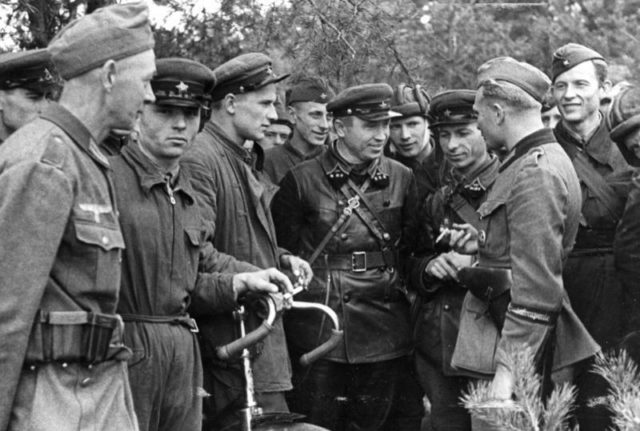
![Soviet and German officers at the demarcation line examine a map. 21 September 1939 [Bundesarchiv, Bild 101I-121-0010-11 / CC-BY-SA 3.0| Wikipedia]<figcaption class=](https://www.warhistoryonline.com/wp-content/uploads/2016/08/Bundesarchiv_Bild_101I-121-0010-11_Polen_deutsch-sowjetische_Verhandlungen-640x422.jpg) Soviet
and German officers at the demarcation line examine a map. 21 September
1939 – Bundesarchiv, Bild 101I-121-0010-11 / CC-BY-SA 3.0/ Wikipedia
Soviet
and German officers at the demarcation line examine a map. 21 September
1939 – Bundesarchiv, Bild 101I-121-0010-11 / CC-BY-SA 3.0/ Wikipedia
Δεν υπάρχουν σχόλια:
Δημοσίευση σχολίου